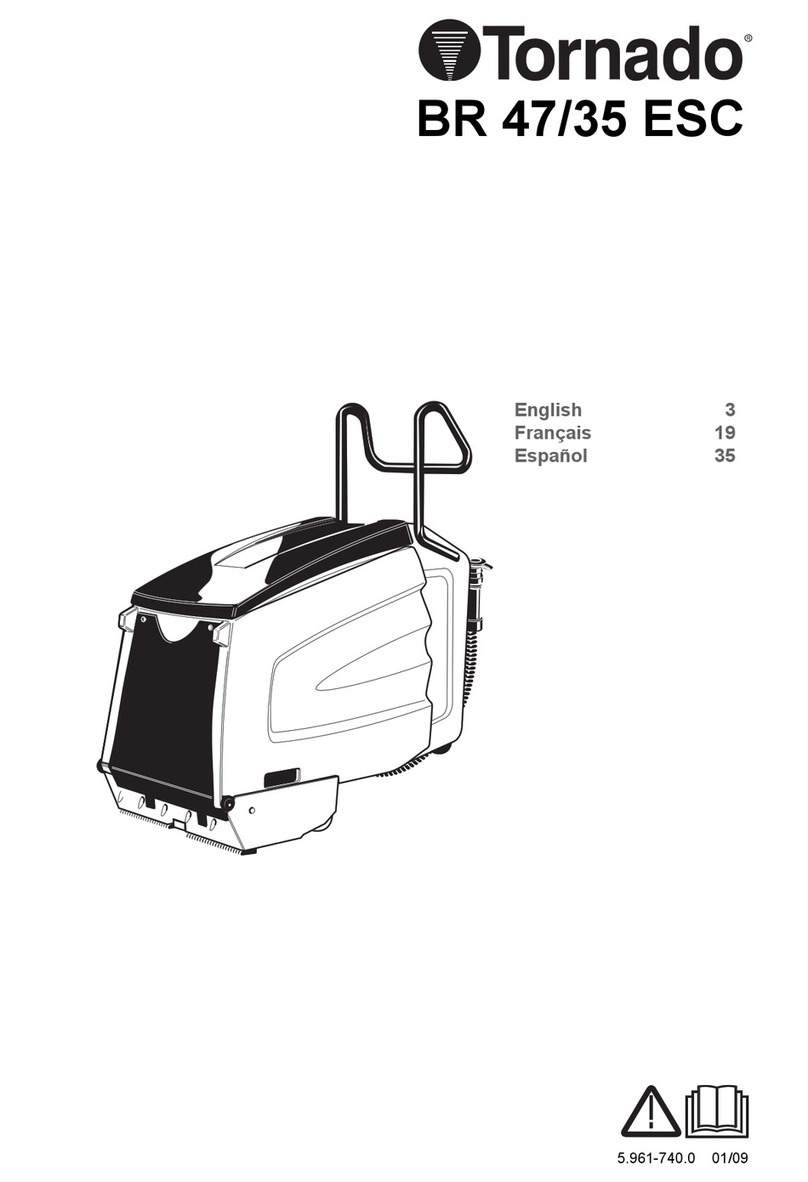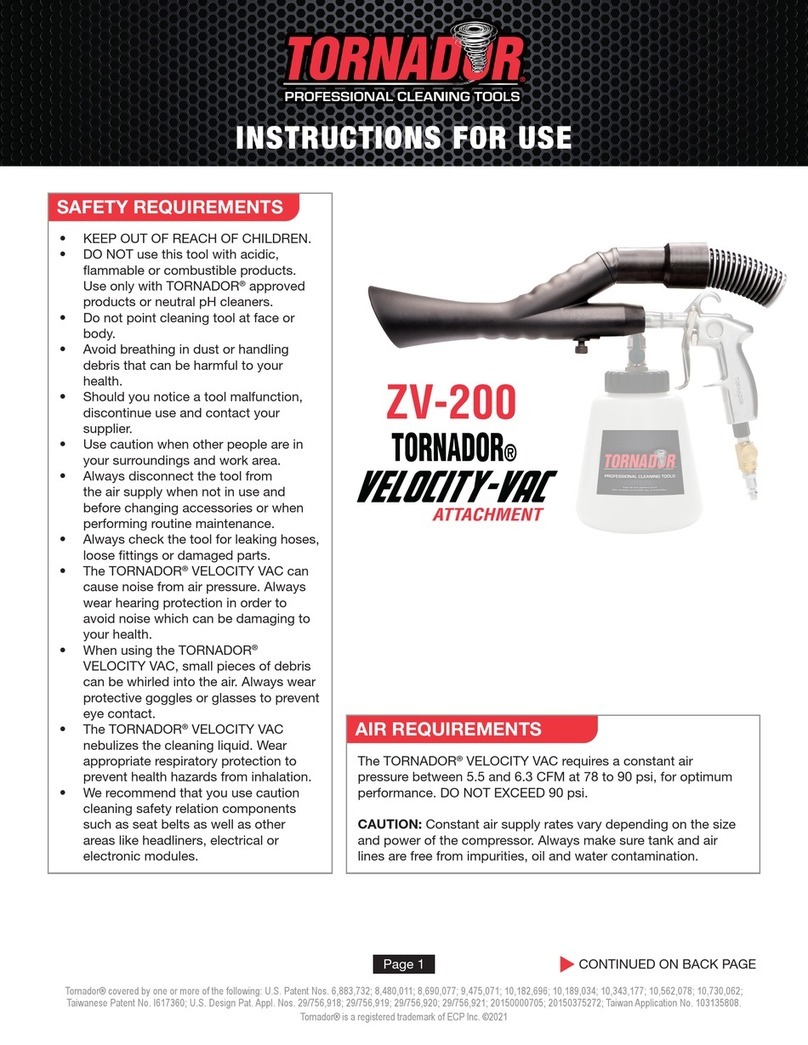Tornado International Ltd Ver 3.1 Jan 14
ORBITER MANUAL
2.0 Site Requirements
2.1 Introduction
ORBITERS are designed to be operated on a flat and level hard surface. This surface may
be of tarmac or Concrete (natural, painted or sealed) Whatever material is used for the
surface it should be remembered that dust raised by the movement of the ORBITERS will
settle on the body and chassis components which will require cleaning more frequently.
To reduce tyre wear the surface should be as smooth as possible. Should you wish to use a
surface of other materials please contact the Tornado International Technical Help
Line. The area should be gently cambered (max 3 degrees) to avoid water remaining on
the surface. An area which slopes must be avoided as this leads to increased vehicle speed
down the slope with implications on safety.
2.2 Orbiter Barrier
A substantial barrier to contain the ORBITERS should be installed. Drawings of a suitable
construction method may be found at appendix A. A removable section of barrier will be
required in order that the ORBITERS may be wheeled out of the area.
2.3 Public Fence
The area should be completely fenced (with gates for the entrance and exit) to avoid
members of the public who have no intention of using the attraction straying into the path
of the cars. The construction method chosen will generally be in sympathy with existing
fencing on the site but due consideration must be given to preventing small children from
entering the area.
The entrance and exit gates should ideally be separate. This avoids any possibility of
people who are entering the area to use the ORBITERS preventing people leaving after
their ride. These gates should be adequately signed (see appendix D) and should ideally
have hinges which allow movement in the appropriate direction. It is vital that the exit
gate be prominently marked when viewed from the inside of the area so that guests may
expedite their exit after their ride. It would be prudent to paint arrows on the floor to help
guide guests to the exit.
The entrance and exit route should be at the same level as the top of the containment
barrier so that guests step down into the operating area and step up out of the area. This
reduces the possibility of guests tripping over the barrier. If this is not possible then the
ORBITER containment barrier must be painted a prominent colour where it passes the
entrance and exit gates to reduce the chances of guests stumbling over it.
1N00- 62 Page 4
Tornado International Ltd 2014






























